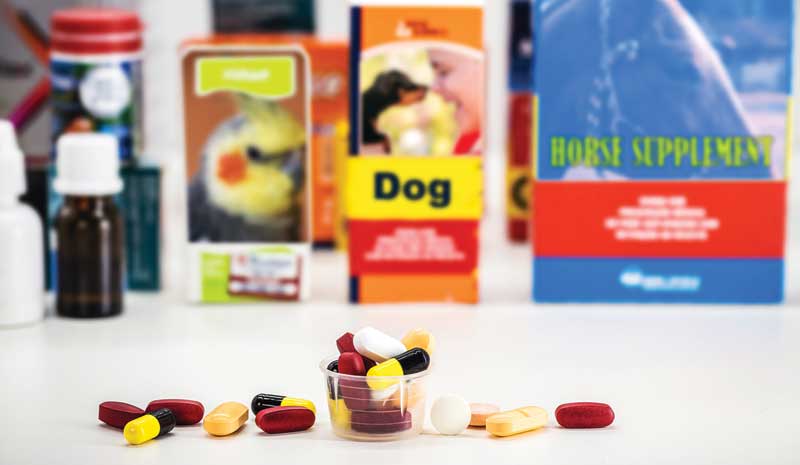
How many of you have outdated drugs within your hospitals? Have you poured an expired bottle of a liquid medication into a kitty litter to dispose of it? Or maybe just dumped them in the garbage?
When I first started my career in veterinary medicine, there was a phase where hospitals would take back expired medications, or those left unused by euthanized patients, to dispose of them for the client. The problem was nobody really knew the proper disposal process. This is where reverse distributors come in handy.
In this article, I will elaborate more about when to use a reverse distributor, any alternatives offered to disposing expired or unused medications, and how to choose the one that fits your hospital best.
What is it?
A reverse distributor is a Drug Enforcement Agency (DEA)-registered person or organization, whose primary function is to act as an agent for a pharmacy, wholesaler, manufacturer, or other entity, by receiving, inventorying, and managing the disposition of outdated, expired, or otherwise non-saleable medications.1 In other words, reverse distributors are legally allowed to take back hazardous or expired medications (including controlled substances) to ensure these materials are properly disposed of into a non-retrievable or unusable state.
When to use it
I specifically use a reverse distributor for controlled substances and hazardous medications as they should never be disposed of down the drain or thrown out in the garbage.
When I was on the hunt for a reverse distributor, I reached out to my pharmaceutical reps for help. Some recommended based on what other hospitals were using, while some did based on prior experience with specific companies. I also went online and looked up each company and looked for reviews.
Another way to gain more information on alternative destruction methods is to visit a trade show or conference. The DEA does not recommend specific companies, but you can look up options online and explore the different processes and requirements per company. Some processes can be lengthier, so choose a company that best suits the needs for your practice.
Once you have selected a reverse distributor, you will be required to purchase a DEA-approved bucket that will be shipped to your clinic. It will also come with the Form DEA-41, or the Registrant Record of Controlled Substances Destroyed form, which must be filled out with the drug name, volume of bottle, number of whole and partial bottles, and total disposal quantity for each drug to be destroyed. Reverse distributors also usually ask for a National Drug Code (NDC) number, lot number, and expiration date for every drug. I highly suggest you make a copy of every form, with the corresponding drug logs and invoices as this will help in the event of a DEA audit.
I do my best to plan and collect enough expired controlled medications to fill a bucket before purchasing. If you want to do the same, be careful in monitoring what you have stocked away to avoid missing items or confusing them for use of a patient.
Knowing the medications are being destroyed properly, and the process documented, brings me peace of mind.
Alternatives to reverse distributors
There are companies selling drug disposal products, which can be used if it meets the DEA’s requirement of rendering the medication as non-retrievable or in an unusable state.
I have used a few drug disposal containers with activated charcoal as the main ingredient, where you can contain the drug for a certain time frame before disposal. Some products may require you to let it sit for 24 hours, while some deactivate and contain the drug in as little as 15 minutes. Make sure to read the directions on each individual disposal system to ensure proper use.
I also suggest checking your DEA regulations for any additional documentation that may be required for disposal. For example, the only time I would use an alternative destruction method with controlled substances is if we administered 4 ml of euthanasia drug, but originally drew up 6 ml total. I would then use Form DEA-41 for the unused 2 ml and provide information required to dispose of it with the alternative destruction method.
Also, be sure to include the date, location, and the method of destruction. Again, always remember to render the substance to a non-retrievable or unusable state and meet all applicable destruction requirements.
Disposal of controlled drugs requires you to have a witness for the entire process, as well as filing Form DEA-41 for at least two years in accordance with 21 U.S.C. 827.2 Drug disposal (controlled or not) can be overwhelming. I know people who will not even touch controlled drugs out of fear of doing something incorrectly. There are so many resources to learn more information about reverse distributors, but sorting through them can sometimes seem an impossible task.
By understanding what exactly a reverse distributor is, how they work, when to use them or an alternative, and how to locate the best one for your hospital or clinic, you are well on your way to having more control and knowledge over your inventory.
Rachel Singletary is a practice manager in Lakeland, Fla., who has started from the bottom and moved her way up throughout the years. She has managed many different areas of veterinary hospitals and her top passion is inventory, staff development, and budgeting. Client satisfaction, growth and inventory are also major factors in her daily life because she strives to provide a positive experience for both her clients and staff every day.
References
- Insider, Law. “Reverse Distributor Definition.” Law Insider, 28 Feb. 2013, www.lawinsider.com/dictionary/reverse-distributor. Accessed 28 Feb. 2023.
- “Diversion Control Division.” DEA Diversion Disposal Q & A, 5 Oct. 2020, https://www.deadiversion.usdoj.gov/faq/disp_destr_faq.htm&sa=D&source=docs&ust=1678406893079883&usg=AOvVaw0h_-hyuNR-aEv11G8kvS9C. Accessed 28 Feb. 2023.
